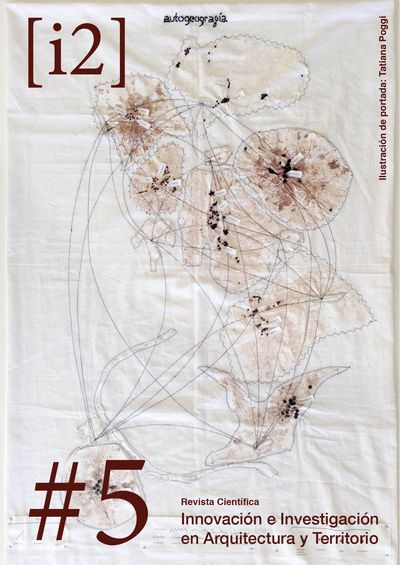La creatividad que se experiencia
DOI:
https://doi.org/10.14198/i2.2016.5.13Palabras clave:
Aspiración, Atender, Caligrafía, Concrescencia, Copia, Creatividad, Hacer, Educación, Historia, Imaginación, Improvisación, Innovación, Encaje, Música, Notación, Ontogénesis, Ejecución, Tiempo, ExperienciarResumen
En ocasiones se representa la creatividad como un factor enigmático que explica la emergencia espontánea de lo radicalmente nuevo. La obsesión con la novedad supone, sin embargo, un enfoque hacia los productos finales y una atribución retrospectiva de sus formas a ideas sin precedentes surgidas en la mente de los individuos. Esta obsesión impide reconocer el potencial de generación formal de las relaciones y procesos en los que cosas y personas se hacen y crecen. En estos procesos lo característico sería pedir a los practicantes que copien las obras de maestros pasados. Sin embargo, a pesar de dejarse llevar por un guión o partitura, cada individuo ha de improvisar su propio camino a través de la variedad de tareas que supone cualquier práctica. Con ejemplos extraídos de los ámbitos de la música, la caligrafía y el encaje de bolillos, muestro que las fuentes de creatividad no residen en las cabezas de los individuos, sino en su atender a un mundo en constante formación. Para este tipo de creatividad, experienciada en lugar de hecha, la imaginación no consiste tanto en la capacidad de topar con nuevas ideas como en el impulso aspiracional de una vida que no es únicamente vivida, sino también guiada. Pero su destino aún no está fijado. Al abrirse a lo desconocido, al resultar expuesta, la imaginación no guía a través de la maestría, sino de la entrega. Por tanto la creatividad que se experiencia, la de acción sin agencia, es la de la vida misma.
Financiación
University of Aberdeen, Universidad de Alicante, John Benjamins Publishing CompanyCitas
Benveniste, É. 1971. “Active and middle voice in the verb”. In Benveniste, É. (ed.), Problems in General Lin-guistics. Meek, M.E. (trans.). Coral Gables, FL: University of Miami Press, 145–151.
Bergson, H. 1911. Creative Evolution. Mitchell, A. (trans.). London: Macmillan.
Boden, M. 1990. The Creative Mind: Myths and Mechanisms. London: Weidenfeld and Nicolson.
Deleuze, G. and Guattari, F. 2004. A Thousand Plateaus: Capitalism and Schizophrenia. Massumi, B. (trans.). London: Continuum.
Gell, A. 1998. Art and Agency: An Anthropological Theory. Oxford: Clarendon Press.
Gibson, J.J. 1979. The Ecological Approach to Visual Perception. Boston: Houghton Mifflin.
Ingold, T. 1986. Evolution and Social Life. Cambridge: Cambridge University Press.
Ingold, T. 2000. The Perception of the Environment: Essays on Livelihood, Dwelling and Skill. London: Routledge. DOI: 10.4324/9780203466025.
Ingold, T. 2001. “From the transmission of representations to the education of attention”. In Whitehouse, H. (ed.), The Debated Mind: Evolutionary Psychology Versus Ethnography. Oxford: Berg, 113–153.
Ingold, T. 2011. Being Alive: Essays on Movement, Knowledge and Description. Abingdon: Routledge.
Ingold, T. 2013. Making: Anthropology, Archaeology, Art and Architecture. Abingdon: Routledge.
Ingold, T. and Hallam, E. 2007. “Creativity and cultural improvisation: An introduction”. In E.
Hallam and T. Ingold (eds), Creativity and Cultural Improvisation. Oxford: Berg, 1–24.
Kubler, G. 1962. The Shape of Time: Remarks on the History of Things. New Haven, NJ: Yale University Press.
Liep, 2001. “Introduction”. In Liep, J. (ed.), Locating Cultural Creativity. London: Pluto Press, 1–13. The crea-tivity of undergoing 139.
Makovicky, N. 2010. “‘Something to talk about’: Notation and knowledge-making among Central Slovak lace-makers”. In Marchand, T.H.J. (ed.), Making Knowledge: Explorations of the Indissoluble Relation Be-tween Mind, Body and Environment. London: RoyalAnthropological Institute, 76–94.
Masschelein, J. 2010. “E-ducating the gaze: The idea of a poor pedagogy”. Ethics and Education 5(1): 43–53. DOI: 10.1080/17449641003590621.
McLean, S. 2009. “Stories and cosmogonies: Imagining creativity beyond ‘nature’ and ‘culture’”. Cultural An-thropology 24(2): 213–245. DOI: 10.1111/j.1548-1360.2009.01130.x.
Nakamura, F. 2007. “Creating or performing words? Observations on contemporary Japanese calligraphy”. In Hallam, E. and Ingold, T. (eds), Creativity and Cultural Improvisation. Oxford: Berg, 79–98.
Oakeshott, M. 1991. Rationalism in Politics and Other Essays. Indianapolis, IN: Liberty Press.
Ortega y Gasset, J. 1961. History as a System And Other Essays Toward a Philosophy of History. New York: W. W. Norton.
Sperber, D. 1996. Explaining Culture: A Naturalistic Approach. Oxford: Blackwell.
Tooby, J. and Cosmides, L. 1992. “The psychological foundations of culture”. In Barkow, J.H., Cosmides, L. and Tooby, J. (eds), The Adapted Mind: Evolutionary Psychology and the Generation of Culture. Oxford: Oxford University Press, 19–136.
Waldenfels, B. 2004. “Bodily experience between selfhood and otherness”. Phenomenology and the Cogni-tive Sciences 3(3): 235–248. DOI: 10.1023/B:PHEN.0000049305.92374.0b.
Whitehead, A.N. 1929. Process and Reality: An Essay in Cosmology. Cambridge: Cambridge University Press.
Wieman, H.N. 1961. Intellectual Foundations of Faith. London: Vision Press.
Wilf, E. 2012. “Rituals of creativity: tradition, modernity, and the ‘acoustic unconscious’ in a U.S. collegiate jazz music program”. American Anthropologist 114(1): 32–44. DOI: 10.1111/j.1548-1433.2011.01395.x.
Yen, Y. 2005. Calligraphy and Power in Contemporary Chinese Society. London: Routledge Curzon.
Descargas
Estadísticas
Publicado
Cómo citar
Número
Sección
Licencia
Derechos de autor 2016 Tim Ingold

Esta obra está bajo una licencia internacional Creative Commons Atribución 4.0.







